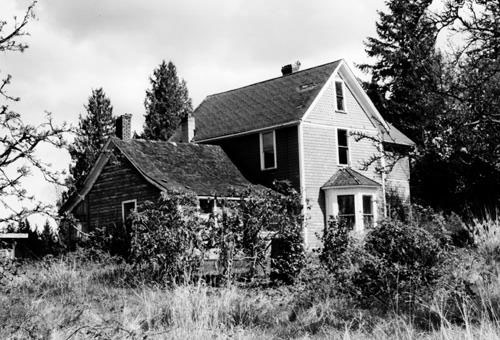
The Reard/Freed House is located on 212th Ave. SE, just north of SE 20th St. in the city of Sammamish. The house is listed on the King County Historic Resource Inventory. It is a physical record of the past and is important to the Sammamish community's cultural life and identity.
The house is a two-story decorated pioneer farmhouse built in the 1890s. The house was built on a post and beam foundation. The high pitched gable roof has been covered with composition shingles. The gable ends are decorated with octagonal wood shingles, and the balance of the exterior walls are covered with horizontal siding. Most of the windows are plainly trimmed double-hung sash.
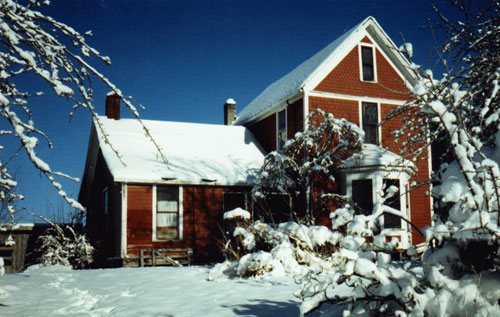
A two-story wing, also with a high pitched gable roof, projects from the east side of the building. The original covered front porch is missing. A door with upper glass panel is located at the south end where the porch once extended. Another single door is at the north end, facing east. A large, elegant, first-story bay window is featured on the south side of the building. It has a wood shingle roof. A long, single-story wing projects from the west side of the house. An enclosed porch is on the south side of the wing. The porch contains a single door with multi-paned fixed windows. Brick chimneys are centrally located on the ridges of both sections of the house.
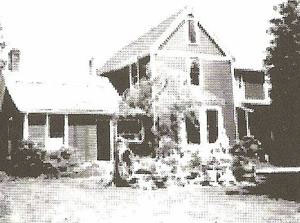
Jacob D. Reard purchased the property on which the house is located around 1890. The 80 acres was purchased from the Northern Pacific Railroad Company for the sum of $380. The Northern Pacific Railroad Company was granted land by the U.S. government in order to construct railroad and telegraph lines from Lake Superior to Puget Sound.
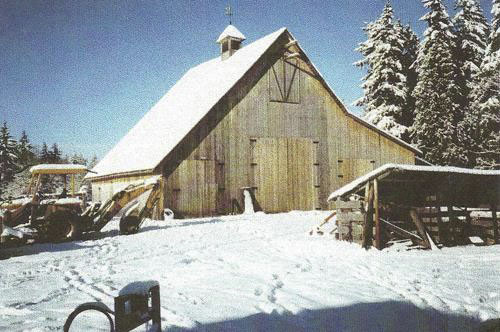
Not much is known about Emma G. and Jacob D. Reard. They took a mortgage out on the property in June 1892 for $900 and paid it off in full in June 1895.
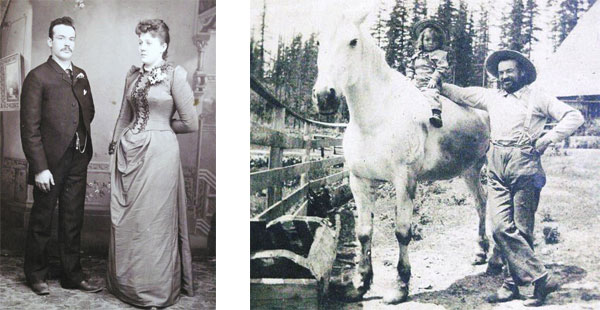
The property went through several owners before O.L. Skogman purchased the property in 1915. During the time the Skogmans lived on the property, the house was a gathering place for the community. Dances were held in the large room on the second floor of the house.
Oscar Freed acquired the property around 1930. The Freeds raised chickens and Hereford cattle. Oscar was responsible for the creation of Water District 82, the first water district in the Sammamish area, and became the first water commissioner.
The movie Act of Love (1980) was filmed at the Reard/Freed House. It starred Ron Howard, Robert Foxworth, and Mickey Rourke. The film was directed by Jud Taylor. It was a sentimental drama about mercy killing of a paralyzed family member. During the filming of the movie, children from the surrounding area would come to have their pictures taken with the stars of the movie.
This home has not been significantly altered and is possibly one of the only remaining examples of a decorated pioneer style farmhouse in the Sammamish area.
2010 Updated Story: Reard-Freed Farmhouse
Most of us who have lived on the Sammamish Plateau any length of time are familiar with parts of the story of the Reard-Freed farmhouse, particularly the Freed half, which we will also review here. But new historical information sheds additional light on Jacob Reard (1866-1917), the man who first bought the property.
Jacob Dominique Reard was born in Germany on March 4, 1866. Little is presently known of his early life or when he came to America, but he appears in the 1889 territorial census for King County, listed as an immigrant laborer. He either brought money with him or made it quickly, because on November 20, 1890, he bought 80 acres of land for $380 from the Northern Pacific Railroad Company. Monohon, about two miles southwest of the property, was the closest village at the time. An 1897 map shows the farm located just northwest of the northern terminus of what was then a short leg of today's 212th SE, a roughly four-block long dirt strip that connected today's SE 20th Street and SE 24th Street (which in the early 1890s was an almost brand new road and known as either Martin Monohon Road -- its official name -- or more informally as Monohon Hill Road). At the time Reard was living in Gilman (now Issaquah). On March 4, 1891, his 25th birthday, he married Emma Groat (1869-1964) of Montague, California; they were married at the Snoqualmie Parlors in Seattle. The young couple returned to Gilman, where the 1892 census recorded Reard's profession as a gardener. An 1893 picture of the Pickering Farm (check it out on the Issaquah History On-Line website) shows Jacob and Emma Reard working in the celery and cabbage fields there. However, they wouldn't be long for Gilman. Reard took out a $900 mortgage in June 1892 to build a house on his new property, and according to tax assessor records, both the house and a barn were built in 1895. The mortgage was also paid in full in June of that year.
Reard built his house in the "National" Style, a relatively simple two-story rectangular house (and an attic) with a gable roof, which was a popular style used in homebuilding for much of the last half of the nineteenth century. At some point, probably not long after the house was built, a one-story wing was added; this later became a kitchen. Reard also added additional touches, such as Queen Anne detailing (examples were fish-scale shingling on the primary gable ends, and porch rail detailing on the house's porch), that made the house look more modern and ornate. The house's overall dimensions are 25 by 57 feet, and it has a six-room interior.
By the time the Reards moved into their new home they already had one child, John (1892-1974), and would have four more. Son Alfred died in infancy in 1896, but three children survived into adulthood: Herbert (1897-1943), Marguerite (1902-1988), and Alice (1908-1989). Reard's grandson, Paul Thomas of Woodinville, says that his mother Marguerite was born in the farmhouse in 1902, and it seems probable that Herbert and Alfred were born there as well.
Reard was a successful farmer. We don't know much about what he grew on his farm locally, but after he moved to Ephrata he won several agricultural trophies at the Grant County fair during the 1910s. But "grandfather had itchy pants, he liked challenges" observes Thomas. "He went to the gold rush in Alaska [probably in the late 1890s] but only came back with one nugget about the size of my thumb." Reard also farmed briefly in Wapato, alone for part of the time while his family remained here. Then he moved again, this time to a 200-acre ranch in Ephrata, sold his Monohon-area farm in 1905, and the rest of his family joined him in Ephrata. They prospered there for more than a decade, raising wheat and fruit. But early in 1917 Jacob Reard was severely injured when he cut his leg on a baler. He was taken by train to Spokane for medical treatment, but died on February 21, 1917.
Meanwhile back on the plateau, the farm went through several owners over the next decade, with many of its owners and tenants alternating between working at the farm or at any one of several area lumber and shingle-making mills. In 1915 Olaf L. Skogman (1856-1929), a Swedish immigrant, bought the property and farmed there. The farmhouse itself became a gathering place for the community, with a large room on the second floor used for dances.
In 1928 Oscar E. Freed (1894-1979) and wife Dorothy (d. 1978) acquired the property, but they didn't move there right away. The Freeds lived in Seattle and had their own business there, the Rainier Valley Food Store. Trying to commute to the farm from Seattle was impractical in 1928, so the Freeds remained in Seattle and rented out the property until 1934. At least one renter found a creative use for the property, and built a still on it. Prohibition was in effect at the time, but illegal stills were commonplace and many did not view them with any real stigma. In a 2005 interview, Oscar Freed's son Richard (b. 1923) described the farm during these years: "We'd go out there and it'd be all quiet – there'd be a few cattle there but that's all. The bootleggers had a still in the barn that was sunk down so you couldn't see it. They put hay over the top of it. Finally the federals came down and knocked the still over. It stunk of whiskey out there for a good three weeks!"
Prohibition had been repealed by the time the Freeds moved to the farm in 1934, and Freed had different plans for it anyway. In 1931 a two-story, wood-frame chicken house with almost 3,000 square feet of space had been built next to a small existing chicken coop. Freed utilized the chicken house to run what became known as the Mountain View Poultry Farm, and at its peak had 3,500 chickens laying up to 1,500 eggs a day. He also raised Hereford cattle, and sharpened dental equipment and made dental instruments to order. He operated the poultry farm into the 1940s, but a back injury from his younger years made it hard for him to move his neck, and eventually he sought out a less physical means of support.
In 1945 Freed pitched the idea to his friends and neighbors of forming a local water district. It was put to the ballot in the fall of 1945 and passed (barely); in February 1946 Water District 82 was born and Freed became the district's first water commissioner.
Since there were no other options, the farmhouse became the first water district office. This was a remarkably laid-back affair, almost impossible to visualize today in a rapidly urbanizing Sammamish. People just dropped by the farmhouse to pay their bills ($4 a month in the early years); Freed's office manager late in his tenure, Margaret "Maggie" McCormick, had her office in the dining room. Freed served as water commissioner until retiring in August 1977. The following year his wife Dorothy died, and son Richard and his wife Blanche moved to the farm to care for Oscar, who died on his 85th birthday on February 6, 1979.
Not long after his passing, the farmhouse gained national attention of sorts when the TV movie "Act of Love" was filmed there. (During filming local children dropped by the farm and got their pictures taken with the movie stars.) The movie, starring Ron Howard and Mickey Rourke, was a drama about a mercy killing (by Howard) of a family member (Rourke) paralyzed from a motorcycle accident, and Howard's resulting trial. Based on a true story, the movie aired in September 1980 and soon faded into history, but not without leaving a legacy: The house, which had been painted yellow, was painted red for the movie, and still has a flaking and washed-out version of this paint job today.
Life on the farm quickly returned to normal after the hoopla from the movie died down. Richard and Blanche Freed had remained on the farm after Oscar's passing, and in the early 1980s Richard converted the interior of the chicken house into a living space for himself and his wife. This was going to be a temporary move as he had plans to restore the farmhouse, but he discovered its underpinnings had dry rot and felt it made the house too impractical to restore. Plus there was another problem -- bats had taken up residence in the attic. So the Freeds remained in the converted chicken house on the farm until 1996, raising Hereford cattle. Blanche, an artist, also taught classes at the farm. In 1996 the Freeds sold the property to John Buchan Homes, a residential developer.
And thus began a rather strange saga. The farmstead was successfully nominated to the National Register of Historic Places in 2001 -- the only location in Sammamish which has been so recognized. But as the development of the property moved forward, only the original house (minus the kitchen wing) was saved from demolition; efforts to save the remaining buildings were not successful. In 2003 the house was moved several hundred feet, much closer to 212th Avenue SE, and placed on blocks pending a move to the Sammamish Commons, which many expected to occur after the Commons opened in the summer of 2006. Instead, the house stayed where it was, and in 2009 the Sammamish City Council voted not to fund its relocation to the Commons. As of this writing (January 2010) the future of the old farmhouse remains up in the air.
Phil Dougherty, January 18, 2010
Sources: HistoryLink.org Online Encyclopedia of Washington State History, "Pine Lake Area Voters Vote To Establish A Water District on November 6, 1945" (by Phil Dougherty), www.historylink.org (accessed May 25, 2009); Phillip S. Esser Historic Preservation Services, "National Register of Historic Places Registration Form," July 12, 2001, in possession of Sammamish Heritage Society; Sammamish Heritage Society, "The Reard/Freed House," website accessed May 25, 2009 (www.sammamishheritage.org); "Olaf Skogman." Find A Grave website accessed May 26, 2009 (www.findagrave.com); Phil Dougherty, "Whats In A Name?" Sammamish Review, January 16, 2008, p. 16; Phil Dougherty, "Sammamish's Names Are Steeped In History," Ibid., February 6, 2008, p. 15; Jake Lynch, "Council Votes 'No' On Freed House," Sammamish Reporter, June 18, 2009, website accessed January 18, 2010 (www.pnwlocalnews.com/east_king/iss-s/news/48549812.html); Phil Dougherty interview of Paul Thomas, May 16, 2009, Woodinville, Washington; Phil Dougherty interview of Blanche Freed, May 25, 2009, Buckley, Washington; Paul Thomas email to Phil Dougherty, May 20, 2009, in possession of Phil Dougherty, Sammamish, Washington